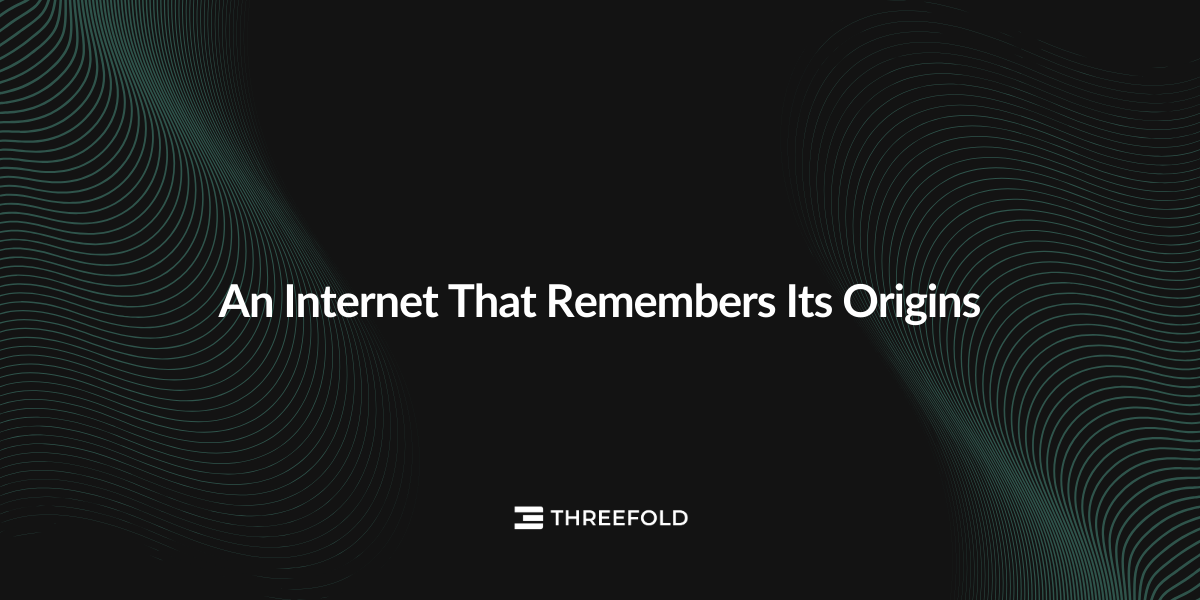An Internet That Remembers Its Origins
The original vision is still alive. Now, we have the tools to realize it on a global scale.

Before today’s massive data centers and tightly controlled platforms, the early Internet felt more like a digital frontier than a ubiquitous part of the modern world. It was a living network built by curious engineers, tinkerers, hobbyists, universities – people plugging in a server, hosting a page, running an email service from bedrooms, garages, workspaces, and university basements. The network grew because individuals contributed capacity, creativity, and their intelligence. It was open and full of possibilities.
Anyone could participate. Anyone could build. Anyone could host. People were free to own their digital lives instead of renting from cloud giants. That freedom was the Internet’s original superpower.
Over time, as the web centralized into a handful of hyperscale clouds, we traded that grassroots openness for convenience. Infrastructure became something only giant companies could provide. The power shifted, the costs shifted, and the Internet’s early sense of shared ownership faded. And that early spirit of tinkering and autonomy was pushed to the margins.
But it doesn’t have to stay in the past.
🔗A Chance to Reclaim the Original Spirit of the Internet
ThreeFold (and upcoming Project Mycelium, version 4 of the grid) taps into the idea that the Internet should be something we participate in, not just consume. Instead of relying on centralized cloud providers, the network is powered by individuals running small, efficient nodes that plug into a global, decentralized network. That means:
-
The power to run your own infrastructure (again)
No single company controls the grid. Just like the early days, anyone can plug in capacity and participate, returning ownership to the edges. -
The joy of tinkering – at modern scale
Set up a node, plug in capacity, experiment, build, break, fix, repeat. The hands-on creativity of the early Internet meets today’s possibilities. -
A community-powered digital commons
Each node strengthens the whole grid. Every contributor helps build a healthier, more neutral Internet, one owned by the people who run it. -
A privacy-first alternative to Big Cloud
Decentralized, energy-efficient, and secure. Your data stays yours, your infrastructure stays in your hands.
🔗The Future Looks a Lot Like the Past (In a Good Way)
ThreeFold isn’t about nostalgia. It’s about reviving what the early Internet got right: openness, decentralization, curiosity – and updating those values for a world now powered by AI, automation, and increasingly data-intensive workloads.
It gives builders, tinkerers, privacy purists, and anyone uncomfortable with the way the Internet is going a path to reclaim agency in a world that desperately needs alternatives.
The original vision is still alive. Now, we have the tools to realize it on a global scale.
With version 4 coming soon, we invite you to take a look at the opportunity to participate in the next phase of our project and ask questions either in our main chat or our forum.

